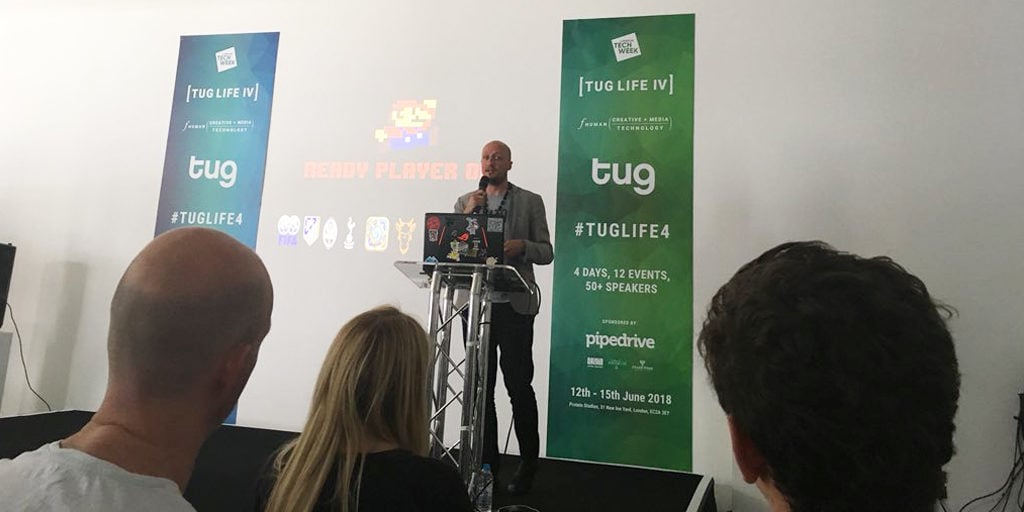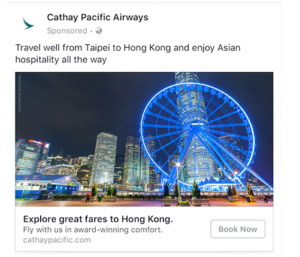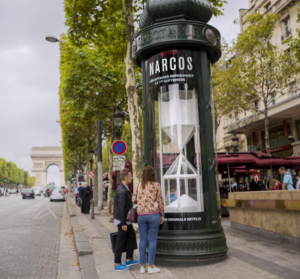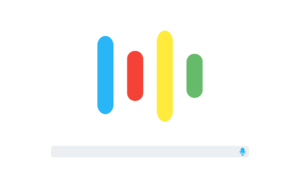We’re consumed by technology and addicted like never before – it’s become impossible for us to live without it. Tech influences many of our day to day decisions without us even thinking about it.
How can we break free from technology’s grip on society and focus on achieving more in our everyday lives? How can we become a healthier, more active generation?
Or are we so gripped and engrossed by tech that there’s no way of turning back? Here’s what we’ve learned from our speakers during the final session.
Social Proof influences decision making
Neil Bayton from Trustpilot walked us through how Social Proof has evolved and developed in advertising, and how it impacts upon our decision making. Social Proof can come in many shapes and sizes, from judging a restaurant on how busy it is, to reading product reviews online.
Trustpilot say, ‘behind every review is a story that matters’, which Bayton supports: “try to tell a story, they are far more memorable than statistics.”
He explained how a study by The Washington Post showed that people are more likely to do something if they discover a large number of people are also doing it – we’re prone to following the crowd.
The crowd we follow in the modern age are led by online reviews, star ratings and influencers, which are impacting upon our decision making more than ever.
Esports is the number 1 consumer growth industry
Adam Whyte from Edge Esports told us how the professional gaming is now the world’s number 1 consumer growth industry – with almost £3bn invested in 2018 alone.
Older generations may fail to see the draw of watching other people play video games, but as Whyte explains “it’s far more interactive, thats why its taking us away from binge watching our favourite TV shows – everyone can get involved and play games with their friends.”
Esports chalked up well over 400m unique viewers on the live streaming video platform Twitch in 2017 – with data proving that kids are now watching more Esports than they’re watching traditional sports on television. “Professional matches on Twitch get more viewers than BT sport”, explains Whyte.

Adam Whyte from Edge Esports
What’s drawing younger generations to the world of Esports? It’s free to watch online. Whyte says that “it feels more authentic to millennials” compared to modern broadcasting.
Influencers and celebrities that kids idolise are playing the games they love – Fornite streamer Tyler ‘Ninja’ Blevins played live online with Drake, with over 230,000 active viewers.
Ninja is “the most famous person in the world”, who has more than 8m followers on the live streaming platform. Twitch alone has over 15m daily active users. “If you’re going to buy ad space, maybe think about Twitch” says Whyte.
The immersive technology sector will be worth £120bn by 2022
Max Cleary joined us from Digital Catapult, a government-backed immersive technology agency, to talk us through a bright future on the horizon for his industry. “We have the only dimension studio in Europe” – equipped with 136 cameras, you can create fully immersive VR and AR experiences.
These experiences are already having major impacts on the health, gaming and manufacturing industries – and business is set to be booming. The sector is currently worth an estimated £3bn, which Cleary predicts to be worth well over £100bn by 2022.
Nationwide access to the latest technology is hindering growth. “The introduction of 5G will open the door to VR and AR tech taking off, it’s 10x faster than 4g, and offers real time connectivity to live experiences.”
A massive thank you to everyone who has been a part of Tug Life IV, including our fantastic speakers who have shared their thoughts with us across the week, our guests and our sponsors.
Have you ever wanted an easier way to share and collect your favourite tweets? Twitter has the answer with bookmarks. This means that you can build bookmarks of tweets that you want to save, share and come back to later. The update has also added a ‘share’ button, which lets you send friends tweets via direct messages, rather than tag friends publicly.
But how does this differ to just ‘liking’ tweets? Bookmarks are private and can only be viewed by you. ‘Likes’ also display publicly when you interact with them, whereas bookmarks stay strictly between you and the tweet.
You can now display fully interactive 3D objects in the Facebook newsfeed. Facebook isn’t stopping there. The network has big plans and is looking to integrate this with the latest AR technology, to bring users a futuristic experience unrivalled by other social platforms.
Refresh your bio by adding hashtags and links to other profiles, ‘a new way to express yourself and the things you care about’. Until now Instagram bios were somewhat restrictive, but it’s now following in Twitter’s footsteps with hashtags that make profiles more discoverable. Links to other Instagram profiles will only need to start with ‘@’ rather than the whole URL, perfect for those looking to keep things neat and tidy at the top of their profile.
In an unexpected U-turn, Instagram are changing their feed to prioritise new posts. This won’t be a complete overhaul of the feed, with posts ranked by its algorithm still appearing below new ones. After facing much criticism, the app stated in its latest blog
We’re introducing changes to give you more control over your feed and ensure the posts you see are timely.
Businesses on the app can now create a fully shoppable feed with the apps latest brand-focused update. By linking products through your Facebook pages catalogue, brands can tag up to 5 products in organic posts that allow consumers to purchase products seamlessly through the app.
This replaces third-party services such as Shopify and Have2Have by fully integrating the shopping experience within the app. In a statement, Instagram say
We want to be that seamless experience. Whether it’s a local artisan, florist or clothing store, shopping directly on Instagram has never been easier.
The messaging app has announced that users will now have just over an hour (1 hour, 8 minutes and 16 seconds to be precise) to delete messages if you’ve made a mistake. This is a big increase from the original 7 minutes that was first introduced at the end of 2017.
Whilst this isn’t so much a ground-breaking feature, it’s certainly a lifesaver if you’re prone to clumsiness on the keyboard or frequently sending the wrong messages to the wrong group chats. It’s one of the first major changes to the app since the launch of WhatsApp status last year, which hit 300m daily active users at the end of 2017.
Snapchat
Get alerts and updates from your friends directly to your Snap Map with Snapchat Explore. The new feature will show travel updates and locations for all friends who have chosen to share their location. Snapchat says, ‘Explore updates automatically appear when friends take a road trip, fly somewhere new and more – like if they visit a landmark or attend a big festival’. Stalker alert.
Bad press equals more press
As PewDiePie and Logan Paul learned, big money and high profiles can translate to mainstream disgrace. But another indication of influencer marketing’s new mainstream significance can be found in an announcement made last year of a tie-up between outdoor giant Clear Channel and an automated influencer platform.
indaHash’s proposition, since it launched in 2016, has included a digital strategy that foresees the next steps in a popular trend:
- Bring scale to the influencer marketplace
- Building and selling social media campaigns using its 400,000-strong team of mid-tier influencers
- Take full advantage of non-celebrity social media influencers that have followings of up to 500,000
But through its Clear Channel deal, it will now be booking campaigns into digital out-of-home (DOOH) slots. If that wasn’t modern enough, indaHash is also experimenting with paying its influencers in its own cryptocurrency.
From Instagram and YouTube to everywhere you go
Clearly, the broad significance of all this is that the distinctively online phenomenon of influencer engagement, perhaps too easily dismissed by those who don’t follow the exploits of social media stars, is breaking out of the internet and into the real world. Just as YouTube stars have become ticket-selling live attractions and I’m A Celebrity guests, so they are now becoming an above-the-line advertising asset.
The same power potentially drives influencer marketing in DOOH as in social media. While many of us may be immune to advertising and prone to ad-blocking, we are still interested in people, and creative, native influencer campaigns can cut through where more obviously branded work can’t.
But whereas online influencers depend on the large but ultimately finite audiences that follow them on a particular platform – albeit boosted by viral effects – DOOH offers mass-market reach.
The sky’s the limit for the influencer market
Think of real-time influencer campaigns tailored for bus shelters, billboards, pubs, tube stations, sporting events, and festivals. The possibilities are there for large-scale, online and real-world takeovers around new music releases, fashion, footwear and other youth-focused categories, using content created by influencers in real time and driving equally real-time interaction. For brands with an experiential appetite, eye-grabbing synchronised DOOH influencer campaigns, done right, perhaps even on a global scale, offer PR opportunities most online activity could only dream of achieving.
There are pitfalls. Real-time content creation in public places raises a safety issue, so compliance work and short safety lags are likely to be essential. Baring the contemporary issues with some high-profile names in mind, influencer relations between agencies, brands and influencers has never been more important.
But once again, the lines are blurring healthily between the channels, demolishing the barriers between online and offline, above and below the line. Influencer marketing is growing up – even if the same can’t always be said for the influencers.
Influencers are increasingly important
The media landscape is changing in many ways – especially when it comes to young people. Many British YouTubers have become celebrities and media outlets in their own right. Advertisers are dealing with issues like banner blindness, ad blockers (used by 47% of UK 18-24 year olds) and the fragmentation of the media landscape, which all mean that younger audiences are harder to reach. This is why influencers – and their ability to create affinity for a brand and influence purchase decisions – are becoming such an important weapon in the digital advertiser’s arsenal.
But there are risks!
There are multiple risks when it comes to working with influencers – and they centre around four areas:
- Credibility: Picking the wrong influencer can result in a campaign being perceived as fake or inauthentic.
- Affinity: Engagement cannot be guaranteed – and it also can be high for all the wrong
- Relevance: It’s difficult to ensure that your content will be landing with the correct audience.
- ROI: Views and engagements can be predicated, but not guaranteed, so it can be difficult to ensure value.
So how do you make the most of opportunities?
The flip side of all the inherent risks associated with influencer marketing are the opportunities, and they are plentiful if you mitigate the risks:
- Credibility: Trust and believability can be achieved beyond any form of advertising – if you get it right.
- Affinity: Making the most of the benefits of tapping into an already-engaged audience.
- Relevance: Using a passion point to connect with your target audience.
- ROI: Can deliver better on KPIs vs other channels or methods.
Credibility
When you pick the right talent, and get the brief right, successful content will follow. But how do you choose the right influencer for your campaign?
Ensure you:
- Know who you are speaking to: who is their audience and where are they.
- Know who else they work with. Do they have any conflicting brand partnerships, or have they said negative things about your brand in the past?
- Consider how they work with other brands – and how many.
When it comes to briefing:
- Keep it as open as possible – this is about collaboration, not commission.
- Keep it top line.
- Do give some direction – it can help to show a few previous examples content you would like to emulate.
- Include mandatories – usually brand mentions, hashtags, retailer info or ecommerce links.
Affinity & crisis management
When you choose the right influencer and give them the right brief, the outcome can be advantageous for both the brand and the influencer. But what happens when you get the influencer selection wrong? Some of the world’s biggest influencers, from Jake Paul to PewDiePie, have disappointed their millions of fans (and high-profile brand partners) by being exposed for abhorrent views and behaviours.
How to avoid a crisis:
- Make sure you Google them. Are they a wild child, are they feuding with other influencers, and are they the subject of any allegations?
- View their content. And not just the recent stuff.
- Check whether they are part of a clique? Ensure they are not nasty or bullying.
Sometimes, no matter safeguards we put in place, we can back the wrong horse. So what do you do when your influencer goes off the rails?:
- Assess the situation and decide whether the influencer has acted in a way which you cannot support.
- If your influencer has done something truly terrible, you will need to follow this process:
- Notify: Inform that the partnership has come to an end effective immediately.
- Remove: All of the influencer’s content from your own channels.
- Explain: Make a public statement on your channels.
Relevance
Rather than using one big influencer, multiple micro-influencers can create the impression of a news feed takeover which can drive relevance to your target audience. Get bang for your buck by picking lots of small influencers who can be more economical than one big hitter. Benefit from lower spends and higher engagements.
Choose several from the same topic area – like London foodies or Manchester fashionistas. This can create the sense that ‘everyone’ is talking about your brand, product or event, as users tend to follow multiple influencers about the same topic.
Consider your audiences in terms of geographical relevance. One big London influencer can be alienating to regional audiences.
Value
To ensure your content delivers better ROI than your digital ads you need to forecast and measure accurately. It helps to have a benchmark – your paid media results can stand in here, but you will still need to decide what the x-factors of authenticity, credibility and personal recommendation are worth to you when analysing results.
To ensure value delivery you need to approach influencer marketing as a media spend or brand partnership:
- Set objectives
- Compare with paid results
- Forecast influencer results based on previous
- Understand influencer audience
- Define value
Influencer marketing should never completely replace digital advertising – although they can deliver reach, ROI, engagement and views in comparison with paid digital advertising, but can’t deliver the spot on targeted and brand ownership of digital ads.
Influencers can be a difficult path to navigate, but once you assess the risks and plan to make the most of the opportunities, you can reap the benefits for your brand.
Now Facebook is cleverly re-targeting users who are checking flights online for a specific date, but don’t actually book, or those who research hotels for an upcoming holiday and don’t reserve on their first visit. These ads can be shown across Facebook, Instagram and the Audience Network to users who are likely to take a trip. How does Facebook know this? By using a pixel placed on the site.
Dynamic re-marketing for travel will help travel clients grow their businesses. This ad format can help hotel and airline brands complete bookings with people who have expressed an interest: they’ll then advertise complementary offers and convert travel intent into a sale. Travel advertising has never been more powerful.
Already, there has been multiple success stories such as Cathay Pacific Airways. Dynamic travel remarketing has helped lower the cost per booking by 10% and increased booking volume by a factor of 16. Another example is Meliá Hotels International, Spain’s leading hotel chain, which has seen a 6.7x increase in return on ad spend and a 79% decrease in overall cost per booking.


Intrigued? Well, all you need to run these ads is to implement the Facebook pixel, upload your travel catalogue, and create a template for your ads. Soon you’ll be using Facebook to win over your travellers.
So when Facebook admits to trialling a new content curation feature called Sets, based around shareable, themed collections, Pinterest presumably gets two feelings: a quick thrill of validation, followed by the uneasy (and familiar) sense of being hunted by something big and merciless.
Hopefully, the popular image-collection platform will take a minute to enjoy the compliment, because these are good times for Pinterest. Its ad spend has grown 33% year-on-year, as advertisers recognise its ability to influence shopping habits, and its offering is sharpening up too, greatly broadening the appeal of the well-loved service to advertisers.
Having rolled out search ads in February, Pinterest this month announced, like Snapchat, a self-serve ad-buying tool, allowing advertisers to book their own campaigns, and with no minimum spend. That’s a game-changing feature for a swarm of smaller advertisers who were previously priced out of a direct sales-team relationship.
Pinterest has also announced other refinements, including a more nuanced autotargeting option, so brands can target searches that are judged by Pinterest’s Taste Graph to be relevant – even if not actually identical – to their keywords.
All of this, combined with 200m monthly users, 2bn monthly searches and Facebook’s flattering/scary attentions, suggests Pinterest has moved up to the top table of social media buys, where it serves – for now, at least – a unique role.
To our eyes, there are a few things that are particularly effective about Pinterest. For one thing, it catches people at an appealingly early point in their shopping process: the consideration phase, when they are just starting to plan the wedding, dream up the baby’s room or map out the holiday.
These are serious and momentous life events of varying sizes, and advertisers know they also come with budgets attached and emotions invested. Pinterest, used astutely, can drop brands into the middle of this rich terrain.
These are also often pretty lengthy projects, which leads to another unique point of appeal. The average lifetime of a Pinterest pin is three to four months – far exceeding that of a Tweet or a Facebook post. A topical pin you pay for in October can, with a bit of luck, still be showing engagement and traction as far away as next summer.
So even as Facebook attempts once again to steal its thunder, Pinterest is strengthening on all fronts, and looks ready to capitalise on a particularly faithful and engaged following.
A report by Tech Crunch suggests that Instagram, owned by Facebook, generates approximately 90 million more (250m) daily stories than Snapchat (160m). And this is largely to do with Instagram playing its trump cards by continuously introducing new features that elevate the platform’s popularity.
Although Instagram Stories is only a year old, there are already a variety of unique filters that can be used while videoing – a more premium looking text format and more recently, polls – where users can pose questions for their followers to interact with.
Facebook itself, however, has struggled to gather momentum for its own version when it launched earlier this year. A user may have upwards of a thousand Facebook friends. But they’d struggle to find more than a handful of stories on there – half of which have been shared via Instagram.
But if there is a platform that refuses to accept defeat, then it’s Facebook. Just last week it extended the content for brands and pages as opposed to just individuals. Seeing the popularity of brands such as Nike using Snapchat and Instagram Stories, Facebook quickly followed suit and its own version is now being used more frequently by brands.
The spontaneous nature of Stories is what makes the medium so popular (just not on Facebook) in its early years. Snapchat revolutionised the way social users interacted with one another and brands soon grasped its potential for outreaching to consumers. From social media influencing to offering exclusive deals – the ways in which brands are creating content, specifically in the Story format, shows just how effective it is.
Brands are also quick to exploit the flexibility of the format: Q&A content strung together in a series of videos is one example.
Some DIY brands like Wickes use stories as ways to provide customers with step-by-step stories indicating how to use the products. Instagram’s poll feature has the potential to be the most popular. Brands can do direct market research in a creative way, and then being in a position to make key decisions based on consumer feedback.
An impressive example of brands using stories is Ralph Lauren. Their Instagram account allowed their followers exclusive viewing access to Paris Fashion Week with an access only look at backstage happenings of the illustrious event. Quickly gathering attention, Ralph Lauren accumulated 12,000 new followers throughout the week as followers had a front row view of the show, straight from the account’s Story.
A report by Media Kix explains how over 50% of Instagram’s 12 million worldwide registered profile businesses has created a story; ranging from brands such as Heinz and Ryanair.
Jessica Ricks, a fashion designer and beauty blogger, with a massive social media following, made the transition from Snapchat to Instagram after seeing the better reach Instagram has. Speaking to Media Kix, she said: “Business-wise, definitely Instagram is better. It is easier to get recognized by brands and to be discovered, since there is no current way to explore users on Snapchat.”
Instagram seems to be numero uno when it comes to stories. The constant additions to the feature continues to propel its usage. One of the most popular things brands do on Instagram is allow customers to take over accounts for a day to show how products and services are being used from a first-hand account. Southwest Airlines do this frequently and customers story their journeys straight from the airline’s Instagram page.
Brands will continue to get creative using stories – in direct correlation with the rate at which the internet giants up their game and roll out new features. What’s clear is how different the landscape looks now compared to when Stories was just a simple snap that disappeared in a day.
The rollout for Narcos Season 3 is the one campaign that really stands out for me, and is sure to sweep all the awards.
It had it all…
The campaign piggybacked onto moments by connecting to the football transfer deadline day – which had everybody talking. By relating what the team were marketing to a real-life event of widespread interest, they achieved a truly engaging experience. Every footy or Narcos fan in the Tug office was talking about it and I still reference it to this day. It wasn’t incredibly creative, but it was truly engaging.
A huge banner across The Guardian Sports section, kept a running tally of the money ‘The Cartel’ will make by the end of Deadline day. Spoof video interviews with the character of Pablo Escobar in a Sky Sports-style format appeared on Sports Bible. The brains behind the campaign knew where their audience would be, and created a way of ensuring engagement – genius!
 They activated audiences across social media and engaged with them as if they were in character. One viewer posted: “anyone know how I could watch season 2 without Netflix? Thanks.” To which Netflix replied: “stealing from Pablo is a bad idea.” This type of response only created more comments and more hysteria.
They activated audiences across social media and engaged with them as if they were in character. One viewer posted: “anyone know how I could watch season 2 without Netflix? Thanks.” To which Netflix replied: “stealing from Pablo is a bad idea.” This type of response only created more comments and more hysteria.
How they connected online and offline really took the campaign to the next level. In the following weeks they would use Out of Home to deliver further truly engaging creatives. They transformed the Champs-Elysées avenue advertising columns into giant hourglasses filled with cocaine-resembling white powder, creating a physical count down for fans before the worldwide release. Bus stops that appeared to stockpile cash were seen across major cities. Even fake lines of cocaine appeared in bars and nightclub toilets. They took OOH to a whole new level.

The campaign even teamed up with Babbel to offer UK viewers Spanish lessons, so they didn’t have to read the subtitles! Literally no stone was left unturned.
The reason this campaign stands out is how they connected the dots between all the channels where their audiences would be. And due to the widespread popularity of the show, the audiences are everywhere!
Hats off to Netflix, I think I enjoyed the campaign more than the show!
If you want to understand how you can be behind the next campaign that has everybody talking, join us on 19th of October. Details of the event can be found here:
https://www.eventbrite.co.uk/e/display-day-bringing-back-the-magic-tickets-38034564406
Since Apple’s Siri emerged in 2011, voice activated search has evolved from a fun new gadget to “a top priority in 7% of marketer’s marketing plans,” based on a report conducted by ClickZ and Marin Software.
With voice assistant usage on the rise, companies such as Amazon, Google, and Apple to name a few, saw an opportunity and capitalized on it by introducing a new product that aims to invite voice search into the home.
- Amazon Echo – on the market the longest, operates with Bing (first released 6th November 2014)
- Google Home – operates with, surprise…GOOGLE (first released in the US 4th November 2016)
- Apple HomePod, – will have the original voice assistant guru Siri, integrated into the device. (due out in December 2017)
As AI grows its capabilities, it becomes clearer that we’re moving in the direction of voice-led search. ComScore has predicted that by 2020, 50% of all searches will be by voice. This can be contributed to the year-on-year improvement of voice-word accuracy rates, along with the convenience in situations where hands and vision are restricted.

How voice search is being used
Consumers seem to be really embracing this new technology, and getting used to the idea of interacting with technology on a more personal level. While it may never compare to the relationship that Theodore, played by Joaquin Phoenix, experiences with operating system ‘Samantha’ (Scarlett Johansson) in the Hollywood drama Her, consumers are at the very least “excited” about the speed and efficiency voice search provides for everyday tasks.
The KPCB 2016 Internet Trends study reveals that 61% of users like the convenience and utility of voice search when their hands or vision are occupied. As voice search continues to rise in popularity, the way in which consumers phrase queries is also shifting. Customers no longer need to insert key terms; they can ask questions using full sentences to express exactly what they’re looking for. This will undoubtedly impact optimization strategies as brands strive to be the most relevant.
The way individuals conduct searches through voice is vastly different from the way they type a query within a search box. Because search queries are more conversational when spoken, they tend to be lengthier, more unique and reveal a much greater intent. For example, a user might type in keywords “laptop repair near me,” but might tell a voice assistant: “my laptop just went unresponsive and my monitor went black and can’t get it to respond.”
What does this mean for marketers?
Voice assistants are now part of the multi-channel consumer experience. When used properly, they are effective and effortless, further closing the gap between consumer and brand.
Marketers are still dipping their toe in when considering how smart hubs can be implemented into marketing plans. We often avoid answering our front door when we know someone is there selling something, so consumers may be timid when it comes to “opening the door” to advertisers and brands within their personal space.
Issues undoubtedly will surface, and its difficult to predict what strategies might work best for marketers until we see more data behind how people will utilize the technology.
While voice search isn’t likely to replace existing screen-based search, there will be incremental change as businesses understand how to be found by voice search. After all, 50% is a big piece of the pie.
This year fake news came of age. And not in a good way.
The phenomenon first took centre stage during last year’s U.S. Presidential election, with false stories weaponised by Trump supporters, with the intention of causing maximum damage to Hillary Clinton’s campaign.
In fact, BuzzFeed discovered fake news stories drew more shares and engagement during the final three months of the campaign than legitimate reports from the Washington Post, CNN and the New York Times. That is astonishing.
Since then, fake news has seeped into the public consciousness on a global scale – with social media fanning the flames. We’ve seen Alex Baldwin supposedly arrested for assaulting Trump at the Emmy’s, Katy Perry brokering peace with ISIS, and NASA warning the planet would be plunged into 15 days of darkness in November!
Sceptics may downplay the era of fake news, but it’s a global problem now. The BBC’s survey of 18 countries revealed 79% of respondents were worried about what was fake and what was real online. And a recent survey showed millennials get 74% of their news from online sources (Media Insight Project), so there’s a real danger of things spiralling out of control. The long term decline of traditional news media hasn’t helped things either. They’re the so-called ‘guardians of the truth’ and without them as comparisons, calling out phonies will only become more difficult.
But surely only a dummy would fall for a fake news story? Not so fast. Many news formats are easy to imitate, and plenty of sites now look professional and polished. The good news is the web giants are finally starting to get their acts together too. In Canada, Google is helping to fund NewsWise, a classroom initiative aimed at teaching kids how to detect a false story. Google also has various Chrome plug-ins that can detect fake stories as you browse. Its rival, Facebook, is also referring suspected hoax stories to fact-checkers before flagging dubious stories with an alert that says ‘Disputed by 3rd party fact-checkers.’
Meanwhile, how does Joe Public spot a fake story? These simple steps should help you distinguish the dodgy from the dope.
- Look for dodgy domain names such as .com.co
- Check the author – do a quick search on them to find out if they’re real or credible
- Delve further into a site’s ‘About Us’ section
- Google the sources of any quotes or statistics – most fake new stories don’t have either
- Is it a joke? If it’s just too hard to believe, maybe it’s satire


